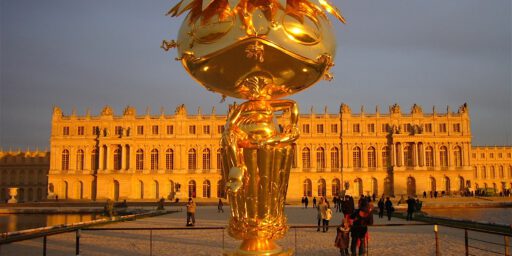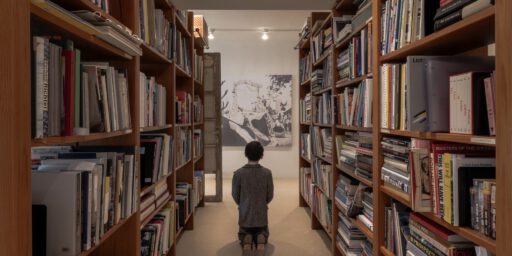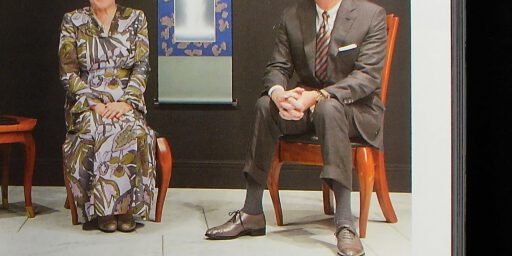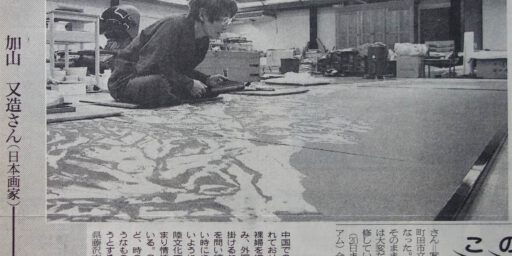亜 真里男のチョイス:亜細亜美術品@クリスティーズ&サザビーズ A Mario's Choice: Asian Art @ Christie's & Sotheby's
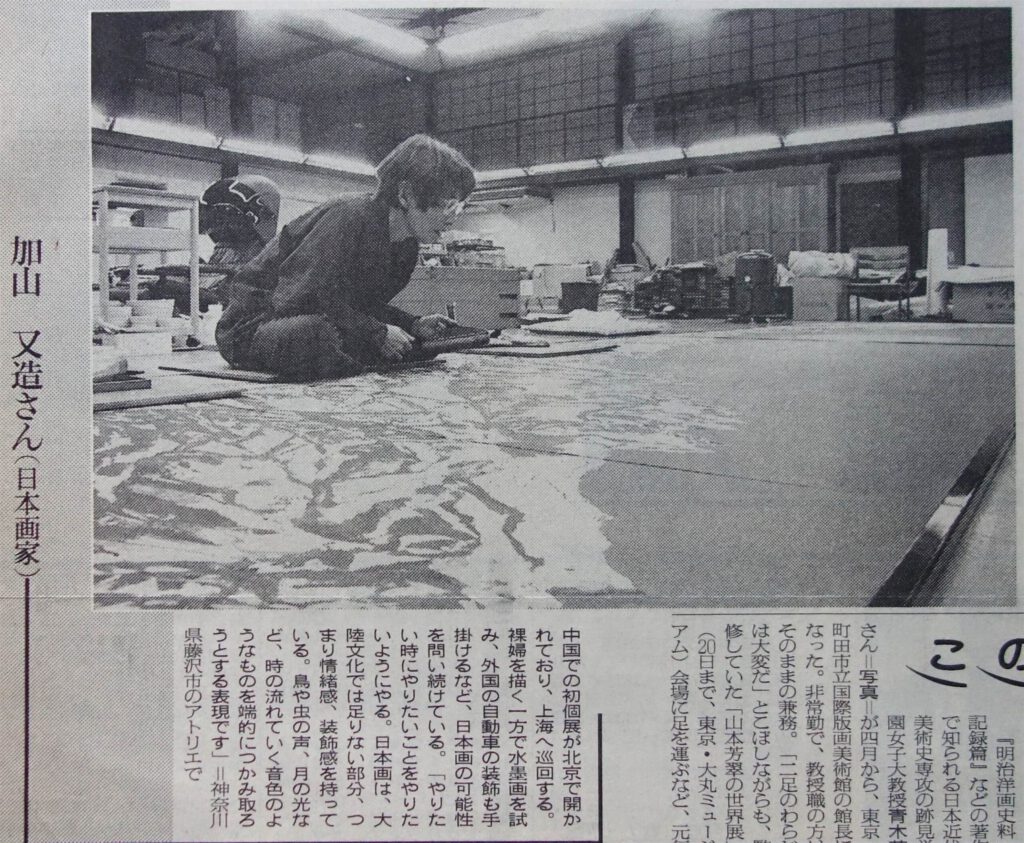
Cover pic taken from: 我が国にっぽんの恥「日展」”Nitten”, the Shame of our Nation Nippon
https://art-culture.world/reviews/nitten-the-shame-of-our-nation-nippon/
Tiếng Tiêu Buồn Nhất Làm Tê Tái Lòng Người
Tiếng Tiêu Buồn Nhất Tê Tái Lòng Người
ART+CULTUREによるにっぽんの美術品収集家「パチンコ王」岡田和生氏のコレクションの売却発表を機に、
にっぽんのアートコレクター「パチンコ王・岡田和生」
Japanese Art Collector “King of Pachinko OKADA Kazuo”
https://art-culture.world/art-world/pachinko-art-collector/
アジア美術の現在のオークション状況を観てみる価値があります。
私がよく知っていた加山又造を、ここで再び「逢える」ことになるとは思いもしませんでした。概要をご覧になりたい方は、2つのオークション会社のウェブサイトをクリックしてください。
On the occasion of ART+CULTURE’s presentation of the sale of the collection of Japanese art collector ‘King of Pachinko OKADA Kazuo’, it is worth taking a look at the current auctions of Asian art.
I never thought I would “meet” KAYAMA Matazō, whom I knew very well, here again. If you would like to get an overview, simply click on the websites of the two auction houses.
https://www.christies.com
https://www.sothebys.com/en/
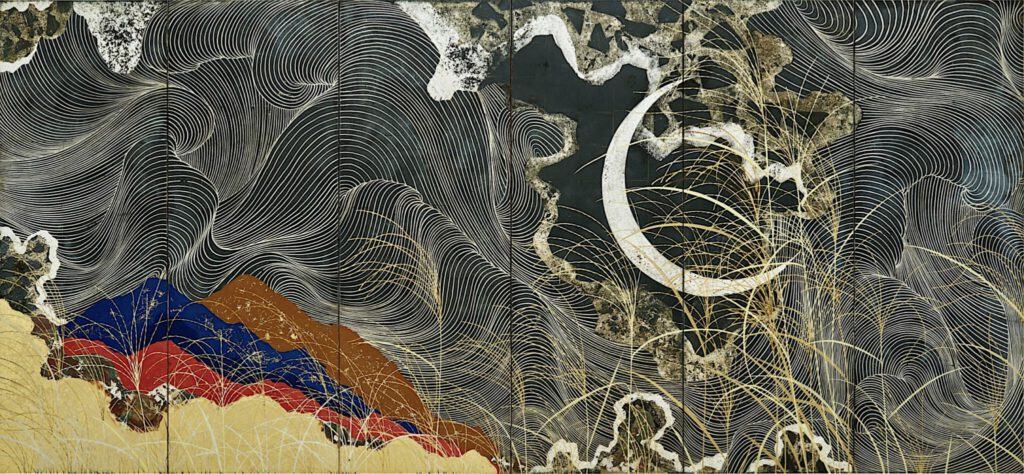
167.7 x 62.5 cm. (when folded)
167.7 x 363 cm. (when unfolded)
Provenance (? Sotheby’s text could be wrong)
The National Museum of Modern Art, Tokyo, Masaaki Ozaki, Kazuo Nakabayashi, Matazo Kayama Exhibition, Japan, 1998, cat no. 24
Rimpa meihinten [Rimpa: The Debut of Essential Rimpa Masterpieces in the Okada Museum of Art Collection], Mitsukoshi (Nihonbashi), Tokyo, 2015, cat. no. 30.
https://www.sothebys.com/en/buy/auction/2025/masterpieces-of-asian-art-from-the-okada-museum-of-art-hk1632/kayama-matazo-1927-2004-crescent-moon-hatsuzuki
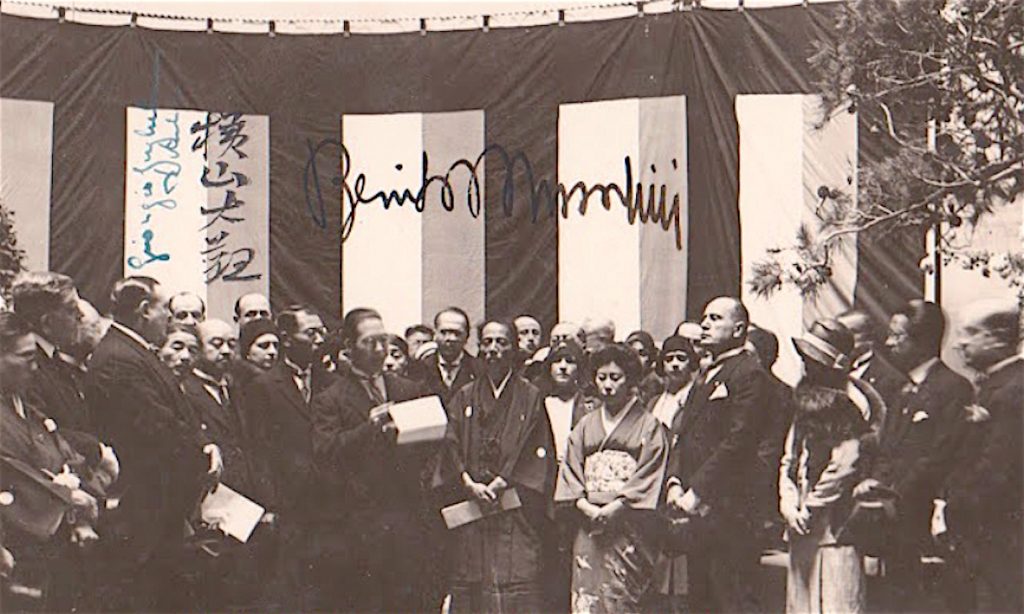
日独伊三国同盟ファシズム:横山大観とベニート・ムッソリーニ
Fascism Axis Japan-Germany-Italy: Nihonga Painter YOKOYAMA Taikan and Benito Mussolini
https://art-culture.world/art-world/fascism-axis-japan-germany-italy-nihonga-painter-taikan-yokoyama-and-benito-mussolini/
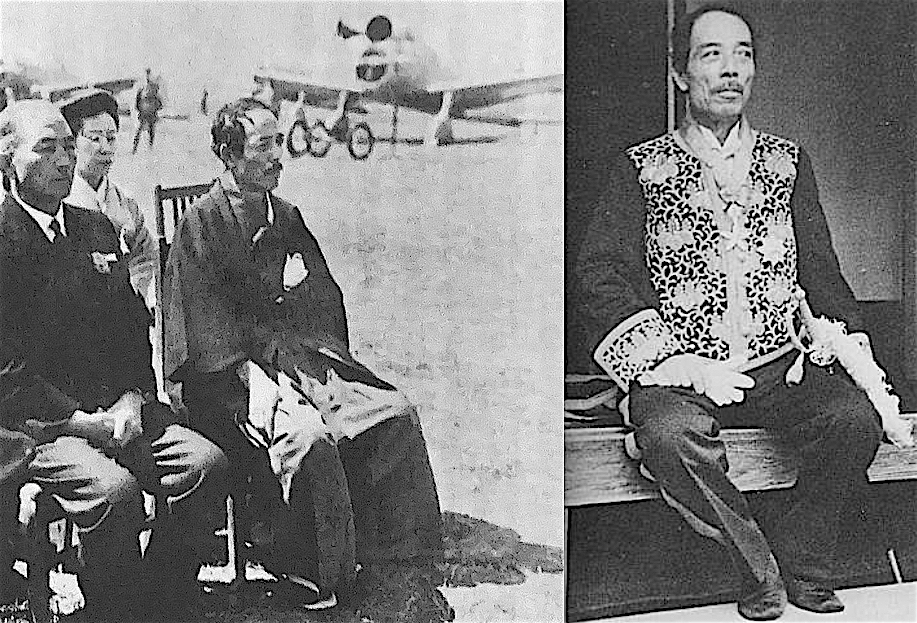
天皇制の為:下らない横山大観戦争画 ー 内閣総理大臣顕彰受賞者村上裕二
For The Sake Of The Emperor: Trashy Taikan YOKOYAMA – Yuji MURAKAMI (Prime Minister’s Award Honoree)
https://art-culture.world/art-world/for-the-sake-of-the-emperor-trashy-taikan-yokoyama-yuji-murakami-prime-ministers-award-honoree/

94 x 873.2 cm. (the painting when unrolled)
120 x 104 cm. (the accompanying scroll with dedication)
Exhibited
5th Anniversary Exhibition. All-Stars of the Okada Collection: Masterworks of Korin, Jakuchu, Hokusai and the Ru Ware Kilns, Okada Museum of Art, Hakone, 2018-19, exh. no. 405 (unillustrated).
Japanese Painting from East to West: Taikan, Shunso, Shoen and More, Okada Museum of Art, Hakone, 2021, no. 49 (unillustrated).
展覽
《美のスターたち-光琳・若冲・北斎・汝窯など名品ぞろい-》,岡田美術館,箱根,2018年,展覽編號405(沒載圖)
《東西の日本画-大観・春草・松園など-》,岡田美術館,箱根,2021年,展覽編號49(沒載圖)
出版
小林忠編,《岡田美術館名品撰》,卷1,東京,2019年,編號134
https://www.sothebys.com/en/buy/auction/2025/masterpieces-of-asian-art-from-the-okada-museum-of-art-hk1632/yokoyama-taikan-1868-1958-mount-fuji-among-dark
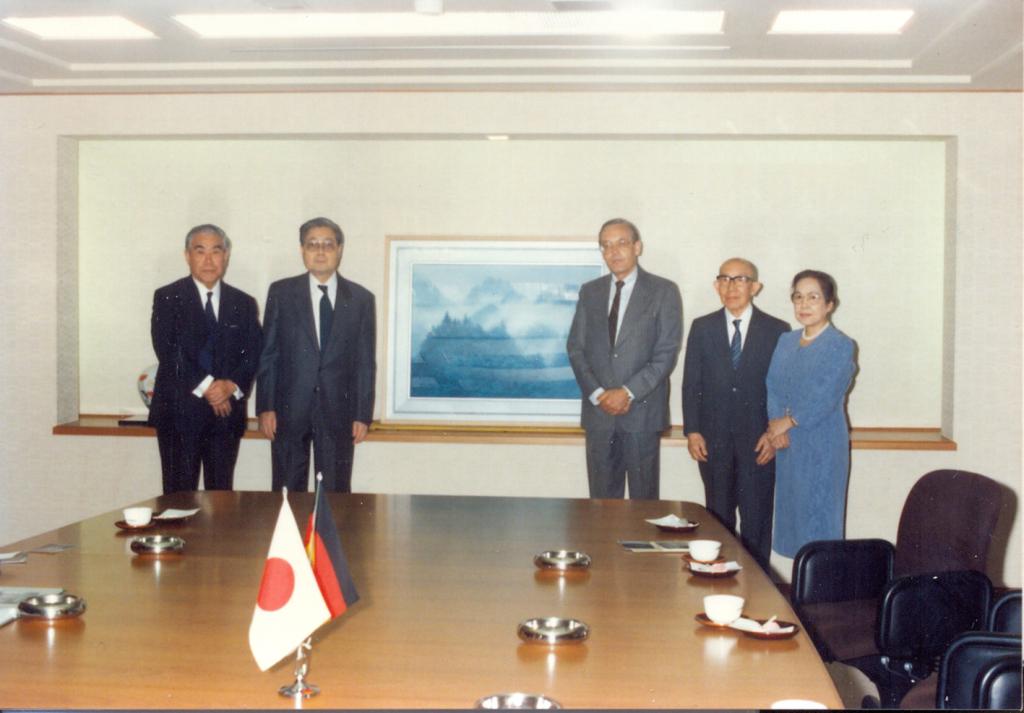
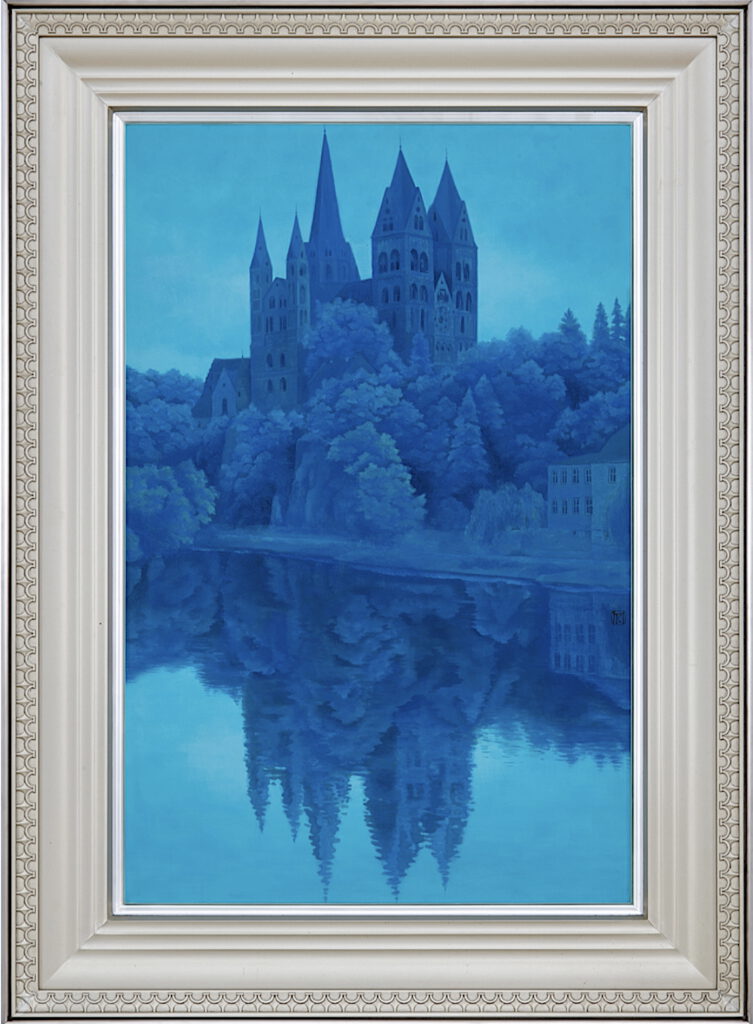
100.3 x 65.2 cm. (the painting within the frame)
131 x 93.7 cm. (including the frame)
Provenance
Mitsukoshi Department Store
(VERY BAD description by Sotheby’s. Deliberate misrepresentation to prospective buyers. 購入希望者に対する意図的な虚偽表示。Also because Mr. OKADA did NOT buy this piece in 1971 at the Mitsukoshi Department Store!)
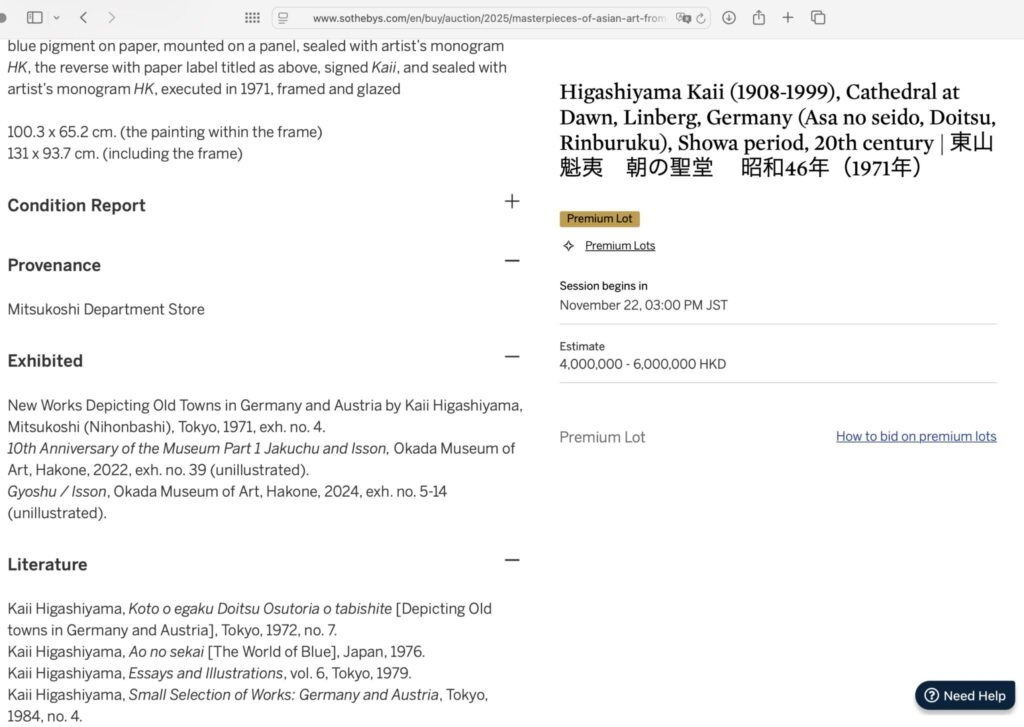
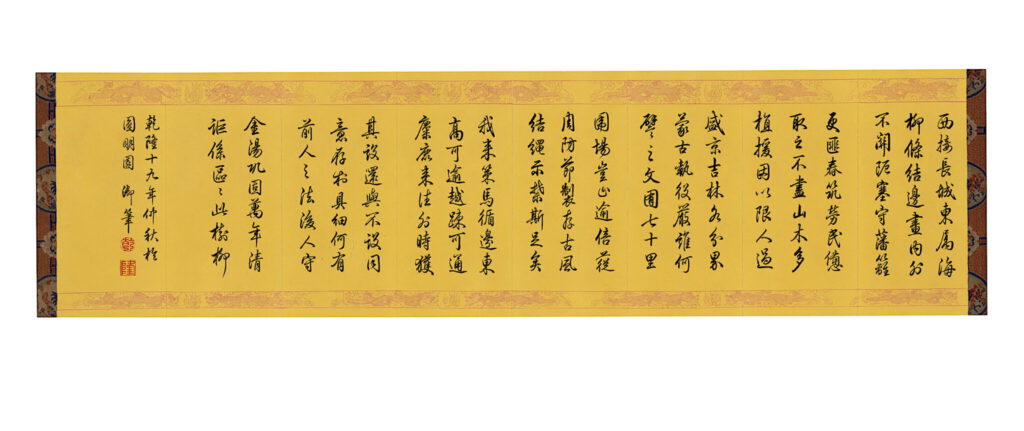
CHINA, QING DYNASTY, DATED AUTUMN OF THE 19TH YEAR OF THE QIANLONG REIGN (1754). Poem in Running Script.
Scroll, mounted, ink on gold-flecked paper.
Signed with two seals.
20.2 x 74.8 cm. (8 x 291⁄2 in.)
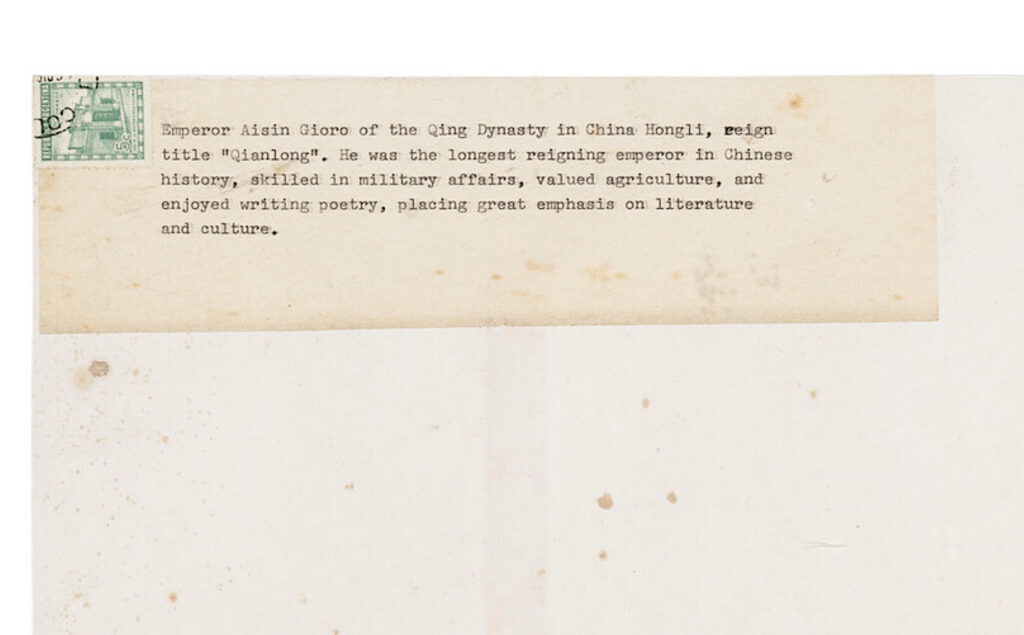
CHINA, QING DYNASTY, DATED AUTUMN OF THE 19TH YEAR OF THE QIANLONG REIGN (1754). Poem in Running Script.
Scroll, mounted, ink on gold-flecked paper.
Signed with two seals.
20.2 x 74.8 cm. (8 x 291⁄2 in.), back detail
This calligraphy, executed by the hand of Emperor Qianlong, presents his poem Liutiaobian, part of a larger collection reflecting on the Qing dynasty’s frontier management system known as the Willow Palisade. The palisade, a network of earthworks and planted willows, was designed to regulate access between agricultural, pastoral, and imperial hunting zones. In the poem, Qianlong combines geographical description, administrative commentary, and political ideology, framing the palisade not only as a practical instrument but also as a symbol of enlightened governance. He explicitly contrasts it with the Great Wall of the Ming dynasty, emphasizing that unlike a purely military fortification, the Willow Palisade functions through regulation, moral authority, and ecological management. The work illustrates Qianlong’s self-representation as a diligent and morally upright ruler who integrates practical administration with Confucian ideals, elevating a utilitarian frontier structure to a literary symbol of Qing order, moderation, and foresight. It exemplifies the interplay of poetry, politics, and landscape in Qing imperial culture.
The calligraphy was inscribed in the nineteenth year of the Qianlong reign, 1754, following the emperor’s early tours and frontier consolidation efforts. By this time, he had acquired a profound understanding of the empire’s territorial extent and administrative systems, and the composition of Liutiaobian reflects a conscious effort to integrate frontier policy with cultural and artistic practice.
https://onlineonly.christies.com/s/art-asia-including-palmer-family-collection-online/emperor-qianlong-1736-1795-127/278011
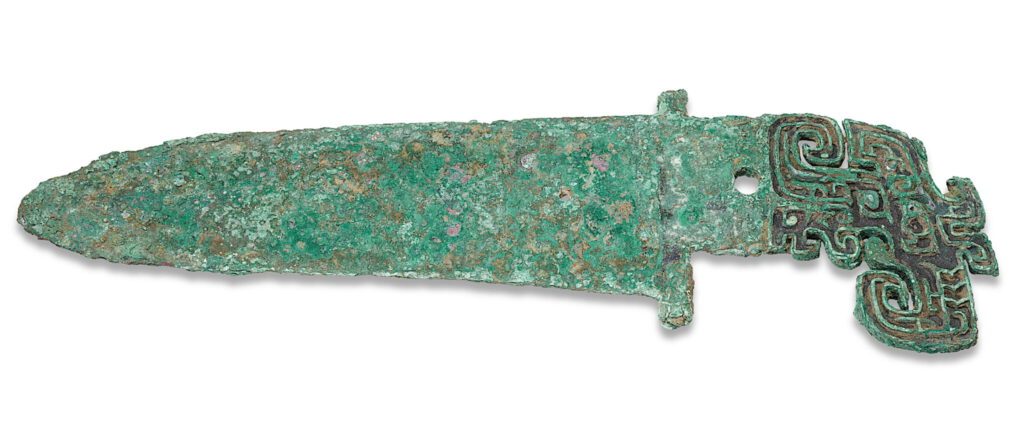
SHANG DYNASTY, CIRCA 1200 BC. 10 5/8 in. (27.3 cm.) long, box.

SONG DYNASTY (960-1279). 4 1/2 in. (11.5 cm.) diam., Japanese double wood box. The result of Oxford thermoluminescence test no. P125e25 (9 April 2025) is consistent with the dating of this lot.

HAN DYNASTY (206 BC-220 AD). 31⁄4 in. (8.3 cm.) long

largest: 91⁄4 in. (23.4 cm.) long, wood stand
https://onlineonly.christies.com/s/pavilion-online-chinese-asian-art/two-scholars-rocks-1325/276418
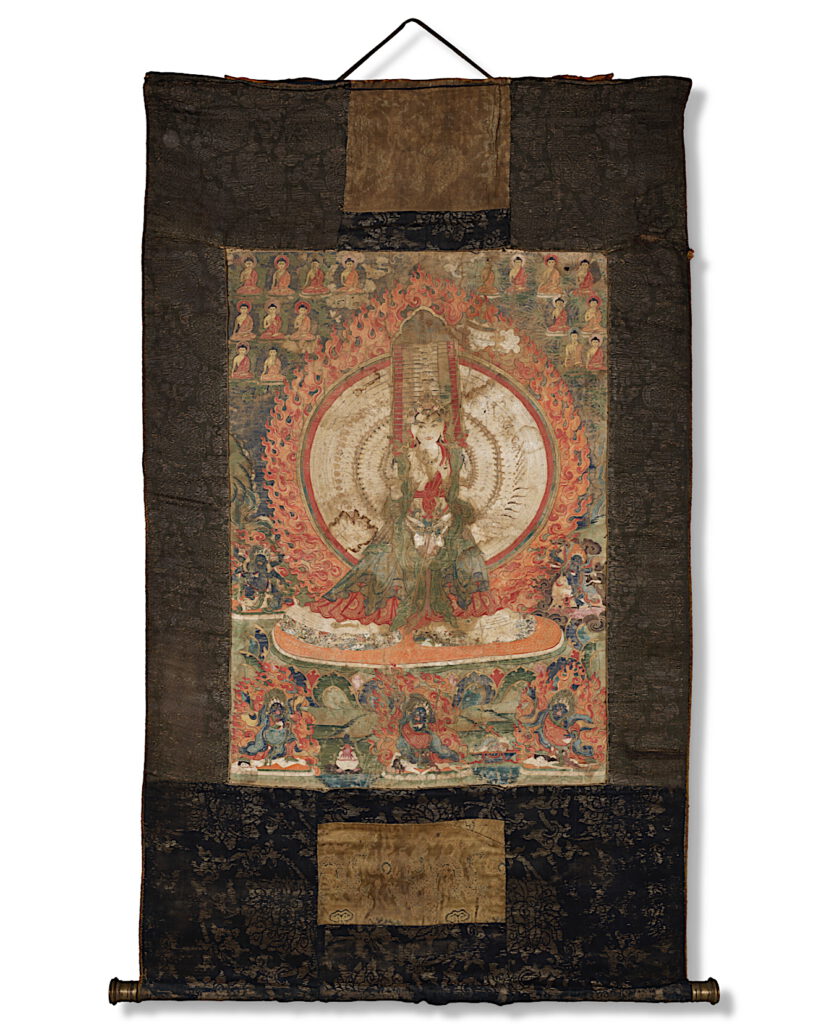
TIBET, 18TH CENTURY. DISTEMPER ON CLOTH
Image: 21 7/8 x 15 3/4 in. (55.5 x 40 cm.)
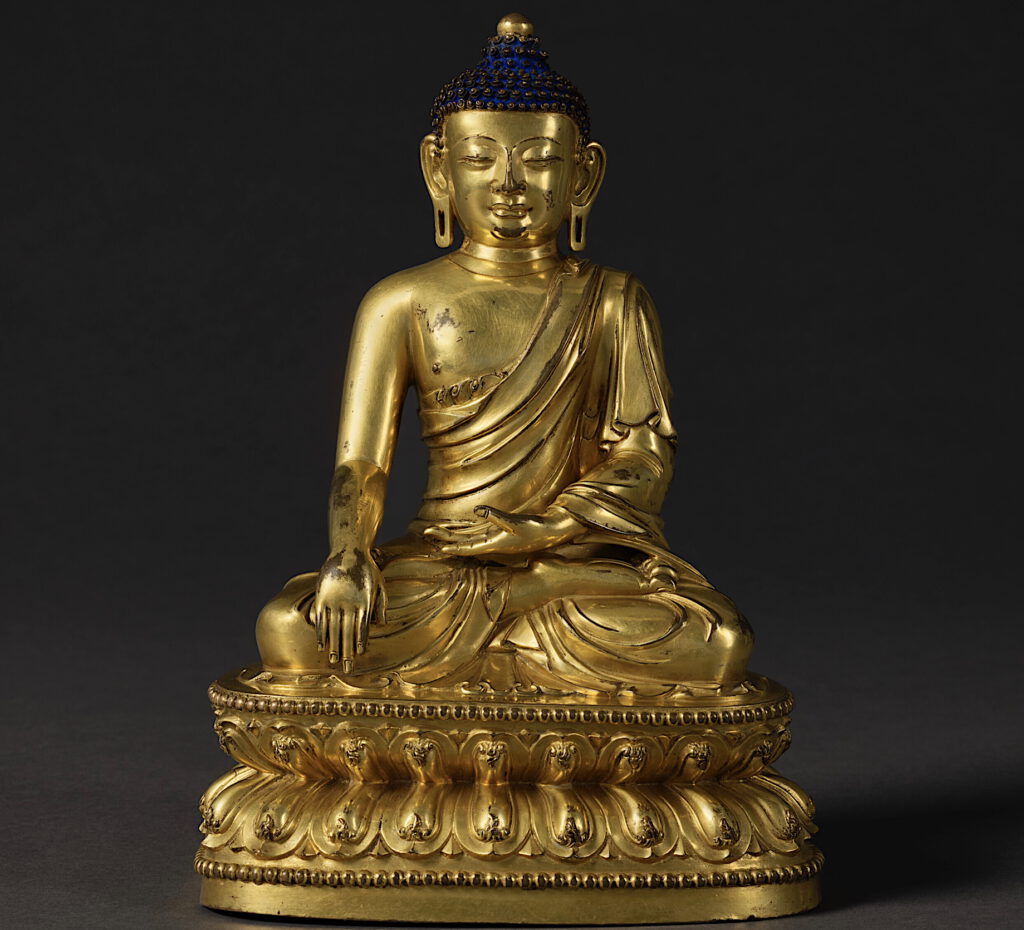
CHINA, MING DYNASTY, XUANDE INCISED SIX-CHARACTER MARK AND OF THE PERIOD (1426-1435). 28 cm. (11 in.) high
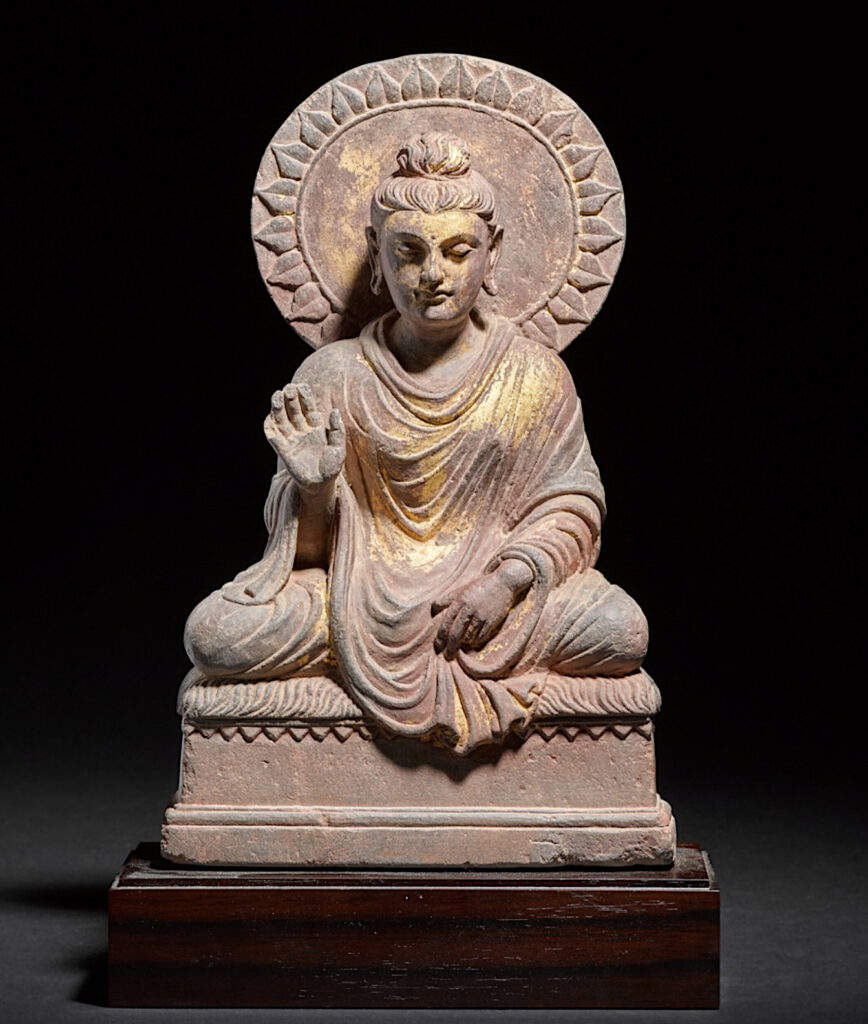
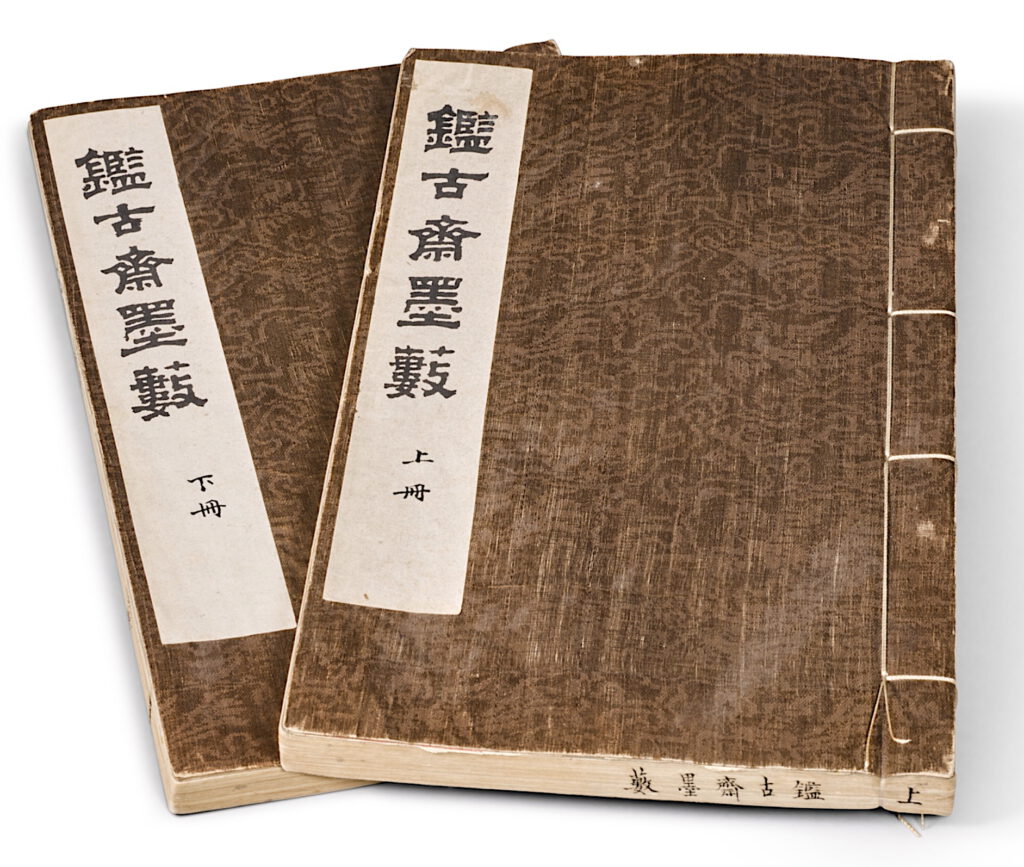
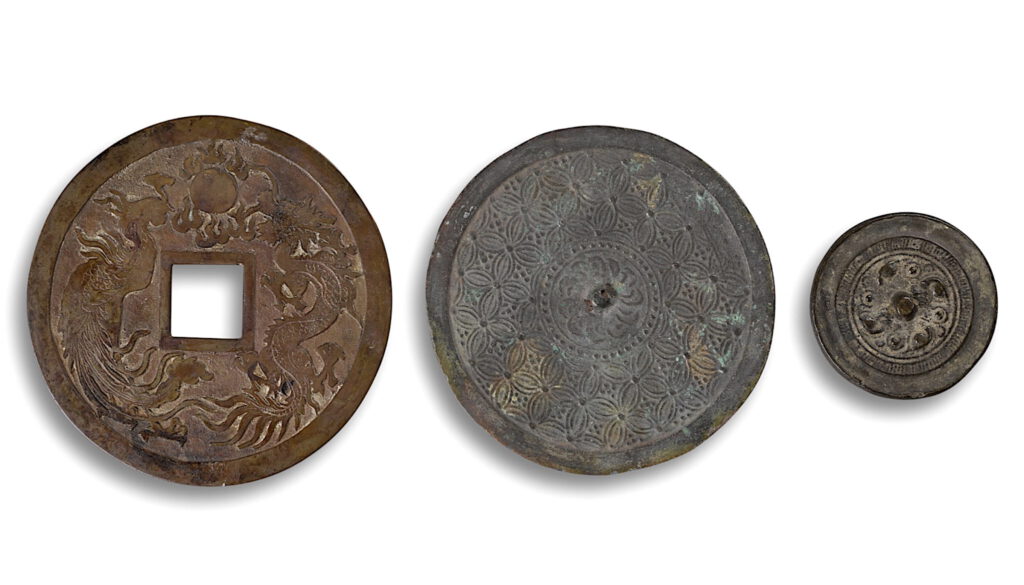

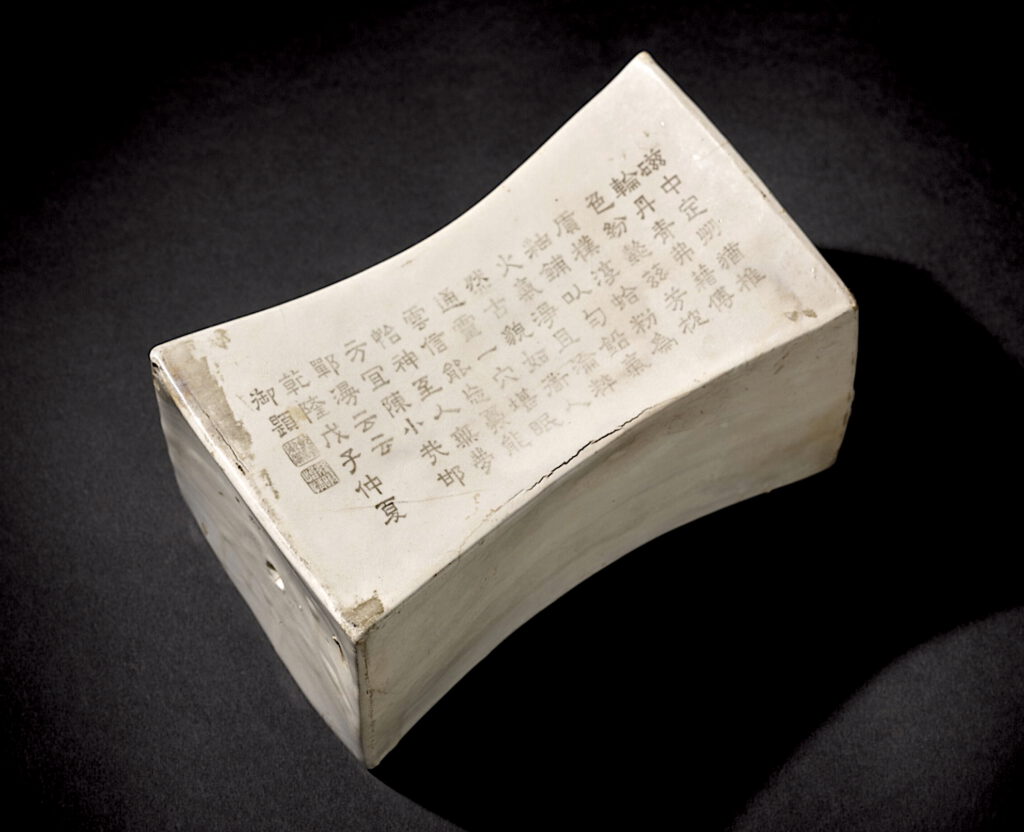
A rare and important imperially inscribed ‘Cizhou’ ingot pillow, Song dynasty, Inscription dated to the wuzi year of the Qianlong period (in accordance with 1768). Carved with a seventy-eight-character Imperial inscription with two seals reading Qianlong yu shang (‘Imperially admired by the Qianlong Emperor’) and jixia yiqing (‘a few moments of leisure‘). Width 23 cm, 8 in. Provenance: Collection of Count Maurice de Bosdari (ca. 1891-1971), and thence by descent.
Catalogue Note
Among ceramics, this of Dingzhou is like a spokeless wheel,
Its colouration does not depend on spreading coloured pigments.
This fine and fragrant pillow, its quality rustic and pure;
Powdered clamshells have the glaze spreading over smoothly.
White lead and flames have left the piece pure and rich with ripples;
So pure in appearance, ancient like a Daoist sage.
Communing with the caves, rising sleeping in the clouds,
Truly you can forget your worries, you can refresh your mind.
The perfect man no longer dreams, all is quite in order,
But the lesser man of Handan will mutter on and on.
Composed by the Emperor, midsummer of the wuzi year (1768)
This poem, inscribed by imperial command, stands as a testament to the critical eye, poetic vision and connoisseurial spirit of the Qianlong Emperor (r. 1735-1795). The Qianlong Emperor is well known both for his substantial art collection, which included an unsurpassed assembly of classic Song ceramics, and for his vast legacy of poems. Raised in the imperial palaces surrounded by the astonishing collections of his father and grandfather, the Qianlong Emperor soon developed a personal taste for the archaic, for China’s history and for beautiful things. Composing poetry in his youth, as an Emperor from the throne, and even after his abdication, over his lifetime Qianlong is said to have written over forty-thousand poems; preserved in imperial compendia and still studied and admired to this day.
While only a relatively small proportion of his overall oeuvre, the Emperor’s writing in praise of ceramics remain among the most notable of his works – particularly those inscribed on Song dynasty antiques. Of the hundred and ninety recorded pieces on ceramics, more than a hundred and fifty of these deal directly with Song wares; see Feng Xianming, Annotated Collection of Historical Documents on Ancient Chinese Ceramics, Taipei, 2000, p. 271ff.
The present poem appears inscribed on a fine cream-glazed pillow of ingot shape, produced around the twelfth or thirteenth century in northern China around modern-day Hebei province. Interestingly, while the Emperor describes the pillow as an example of celebrated Ding ware, modern archaeological and art-historical evidence would suggest the present piece was probably produced at one of the more vernacular ‘Cizhou’ kiln sites. Compare a partially glazed example of this form excavated from the fifth stratum of the Guantai kiln complex in The Cizhou Kiln Site at Guantai, Beijing, 1997, pl. LXXII:2 and a sherd of similar form and tone with traces of an incised decoration, excavated from the Song dynasty Baishe kiln site in Jiangxi province, in Jiangxi Nanfeng baishe yao, Beijing, 2008, col. pl. 47. Indeed, while the Qianlong Emperor was undoubtedly the leading connoisseur of his day, many surviving Song pieces with Qianlong inscriptions feature poems misattributing them to other (usually more esteemed) kiln sites. Compare a Jun-glazed pillow preserved in the National Palace Museum (accession no. gu ci 017431), inscribed with a poem attributing it to the semi-mythical ‘Chai’ kilns; a Qingbai-glazed ingot pillow (accession no. gu ci 017795), said to be from the famous ‘Ge’ kilns; and the famous Ru bowl in the Percival David Collection, now in the British Museum, London (accession no. PDF.3), misattributed to the Jun kilns.
While initially unassuming on first glance, the present pillow exemplifies the message of Qianlong’s poem. Subtly rippling with an understated cream glaze, the pillow appears as a blank canvas for the Emperor’s musings; a pure antique whispering of the ancient past while he lay upon it. As the curators of the National Museum of Asian Art point out in their analysis of the poem and the term chui lun (‘spokeless wheel’), the plainness of the present pillow is taken by the Qianlong Emperor as a symbol of its imperial elegance – like that of an ancient chariot; vide infra, F1942.21, note 1 – while this plainness also presents itself as a metaphor for moral virtue.
Over his sixty-year reign, the Qianlong Emperor would return to his favourite poems again and again, and commissioned them to be recarved on newly acquired pieces in his collection. Indeed, two other extant pillows bear the same inscription as the present piece in closely related hands of clerical script (lishu): the first, an oval pillow with peony decoration preserved in the Palace Museum, Beijing, illustrated in The Life of Emperor Qian Long, Macau Museum of Art, Macau, 2002, cat. no. 51; and the second, purchased by the Freer Gallery of Art (National Museum of Asian Art), Washington, from T. H. Ching in 1942 (accession no. F1942.21), included in Chuimei Ho and Bennet Bronson, Splendors of China’s Forbidden City. The Glorious Reign of Emperor Qianlong, The Field Museum, Chicago, 2004, cat. no. 293. This second pillow is particularly comparable with the present in its size, ingot form and inscription, the clerical script of which shares almost every idiosyncrasy with the present and was almost definitely inspired by the same hand. Notably, while both of these pillows share the same inscription as the present, neither quite fits the poem’s description of a totally plain and pure piece of so-called ‘Ding’ ware. With no mention of carved peonies or ruddy stains in the poem (other than perhaps the reference to lun, ‘ripples’), it seems highly probable that these other examples were only inscribed with the present poem after its initial composition inspired by the present piece in all its purity.
Although somewhat unclear in their phrasing, contemporaneous Records from the Imperial Workshops (Qinggong neiwufu zaobanchu dangan), give invaluable clues into the provenance of the present pillow. On 11th November 1768 – the same year the present poem was composed – records from the tailoring workshop in Beijing (Picaizuo) note:
“On the 3rd day [of the 10th lunar month], Supervisor Side, Foreman Wude, and Clerk Funiya Han reported that Eunuch Hu Shijie delivered one ‘Ding’ ceramic cooling pillow (and stand) and a piece of Song dynasty brocade.
“An order was given to add a white damask lining to the Song brocade and make it into a [matching] cushion. By Imperial Command.”
While not explicitly recorded as having passed to the Jade workshops or Maoqindian (Hall of Merit and Diligence) for inscription, the chronology of this piece arriving in the imperial halls just as the Qianlong Emperor turned his brush to the subject of pillows is unlikely to be coincidental. Compare another more explicit reference to a “‘Ding’ ceramic cooling pillow” passed to the stone carvers of the Ruyiguan (Office of Wish Fulfillment) in fifth month of Qianlong’s fifty-third year (1788), “to be inscribed with a poem.”
Of the handful of other comparable inscribed pillows that still survive, almost all remain in the collections of the Palace Museums in Beijing and Taipei, and only one other known example appears to have ever come to market. Compare a Ding pillow moulded in the shape of a recumbent child, preserved in the National Palace Museum, Taipei (accession no. gu ci 004923), inscribed with a Poem in Praise of the Sleeping Boy Pillow of the Ding kilns (Yong Dingyao chui hai’er zhen, 1773); and a Cizhou pillow in the Palace Museum, Beijing, inscribed with a poem In Praise of an Ancient Ceramic Pillow (Yong gu ci zhen, 1788), apparently unpublished but discussed in Goa Xiaoran, “Qianlong yuzhi shi ciqi kaolun / Studies of Ceramics with Inscriptions of ‘Imperial Poems’ Composed by Emperor Qianlong”, Gugong Xuekan, 2011, p. 297. Also compare two more pillows bearing the Qianlong poem Bai ci zhen (White Ceramic Pillow, 1746): the first, a ruyi-shaped Ding pillow with sgraffiato design, inscribed on the base in gilt semi-cursive, still preserved in Taipei (accession no. gu ci 017426); and the other, closely related to the present in ingot form, sold from the stock of Yamanaka and Company, Parke-Bernet Galleries, New York, 1943, lot 715, and again more recently from the collection of Rosalind Ching Pastor (1920-2019) at Bonhams New York, 15th March 2021, lot 86.
For further examples of Qianlong poems inscribed on other Palace antiques, compare several pieces preserved in the National Palace Museum, Taipei, included in the Museum’s 2012 Exhibition Obtaining Refined Enjoyment, The Qianlong Emperor’s Taste in Ceramics, some of which are described in detail in Yu Peichin, “Consummate Images: Emperor Qianlong’s Vision of the Ideal Kiln”, Orientations, vol. 42, no. 8 (November-December 2011), pp 80-88; a Ding bowl inscribed with a poem dated in accordance with 1776, sold in our Hong Kong rooms, 7th April 2015, lot 3201; and an archaic pottery jar from the Percival David Collection, inscribed with a poem from 1769, sold in these rooms, 7th November 2012, lot 211.
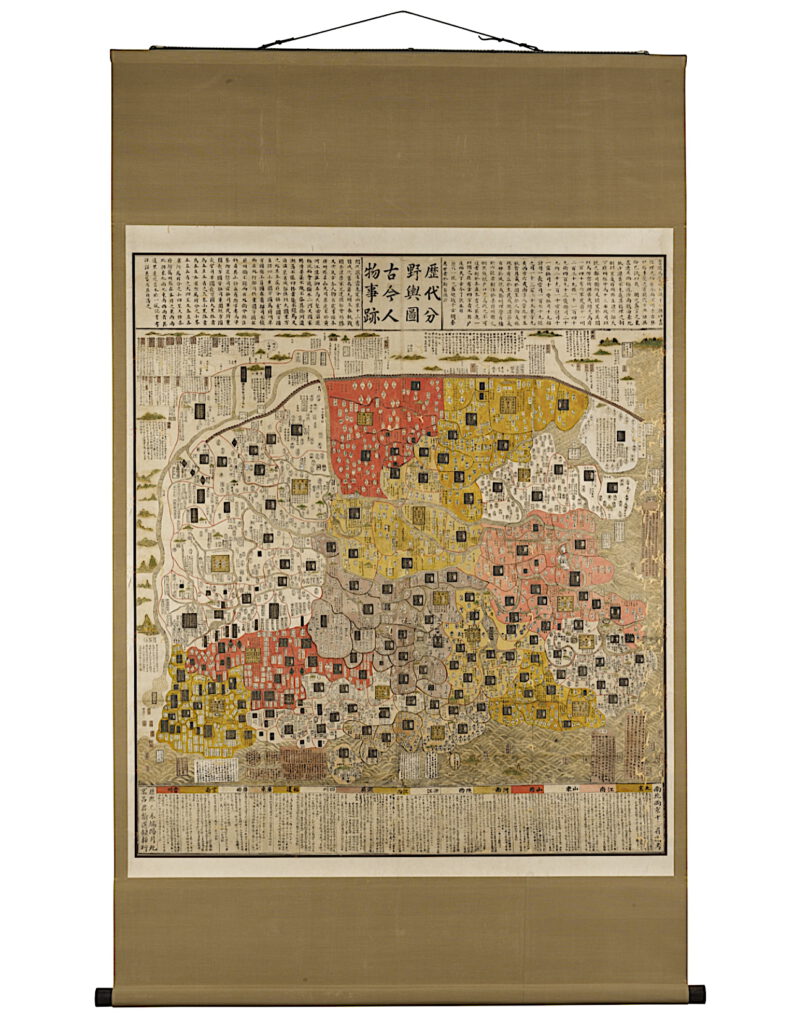
江戸時代前期-17世紀前半-1024x627.jpg)
Chapter Thirteen, The Lady at Akashi
Edo period, early 17th century. Ink, colour, gold, silver, gofun and cut gold leaf on paper, mounted on board, unsigned. 25.5 x 42 cm. Provenance: Fujii collection. Yukihiko Yasuda (1884-1978). Kochukyo Co., Ltd, Tokyo. Literature: Kobayashi Tadashi ed., Masterpieces of the Okada Museum of Art, vol. 2, Tokyo, 2018, no. 59. 來源
藤井家收藏
安田靫彦 (1884 – 1978年)
壺中居,東京
展覽
《琳派名品展》,三越(日本橋),東京,2015年,編號7
《美のスターたち-光琳・若冲・北斎・汝窯など名品ぞろい-》,岡田美術館,箱根,2018年,展覽編號445(沒載圖)
出版
小林忠等,《岡田美術館名品撰》,卷2,東京,2018年,編號59
Exhibited:
Rimpa meihinten [Rimpa: The Debut of Essential Rimpa Masterpieces in the Okada Museum of Art Collection], Mitsukoshi (Nihonbashi), Tokyo, 2015, cat. no.7.
Catalogue Note:
Formerly mounted as part of an eight-panel folding screen depicting eighteen chapters from the Tale of Genji (Genji monogatari). Known as the ‘Fujii family screen’, it was signed Sotatsu hokkyo [Sotatsu of the Dharma Bridge] and sealed with the artist’s circular red Taiseikan mark. The screen was truncated and remounted as hanging scrolls or framed pictures and panels, such as this example. The scene here is from the thirteenth chapter of the Tale of Genji (Genji monogatari), known as The Lady Akashi chapter. Genji, the Shining Prince and darling of the Kyoto aristocracy inconspicuously departs from a lover’s tryst, despite Lady Akashi’s father, the Akashi Priest, attempts to make ceremony of his nighttime visit and announce him as his son-in-law. Quietly, Genji leaves his lover by moonlight on horseback with only a small retinue in tow.
此作原屬一套八曲屏風,描繪《源氏物語》十八帖章節,世稱「藤井家屏風」。作品署有「宗達法橋」款識,並鈐藝術家圓形朱文「對青軒」印。原屏風後經裁切,改裝為掛軸或鑲框畫板,本幅即為其中一例。畫面呈現《源氏物語》第十三帖〈明石〉之景:光源氏,這位京都貴族寵兒正悄然自情人幽會處離去。儘管明石入道(明石姬君之父)欲為其夜訪舉行正式儀式,宣告其為乘龍快婿。月色朦朧中,源氏僅率少數隨從,策馬默然辭別戀人。
